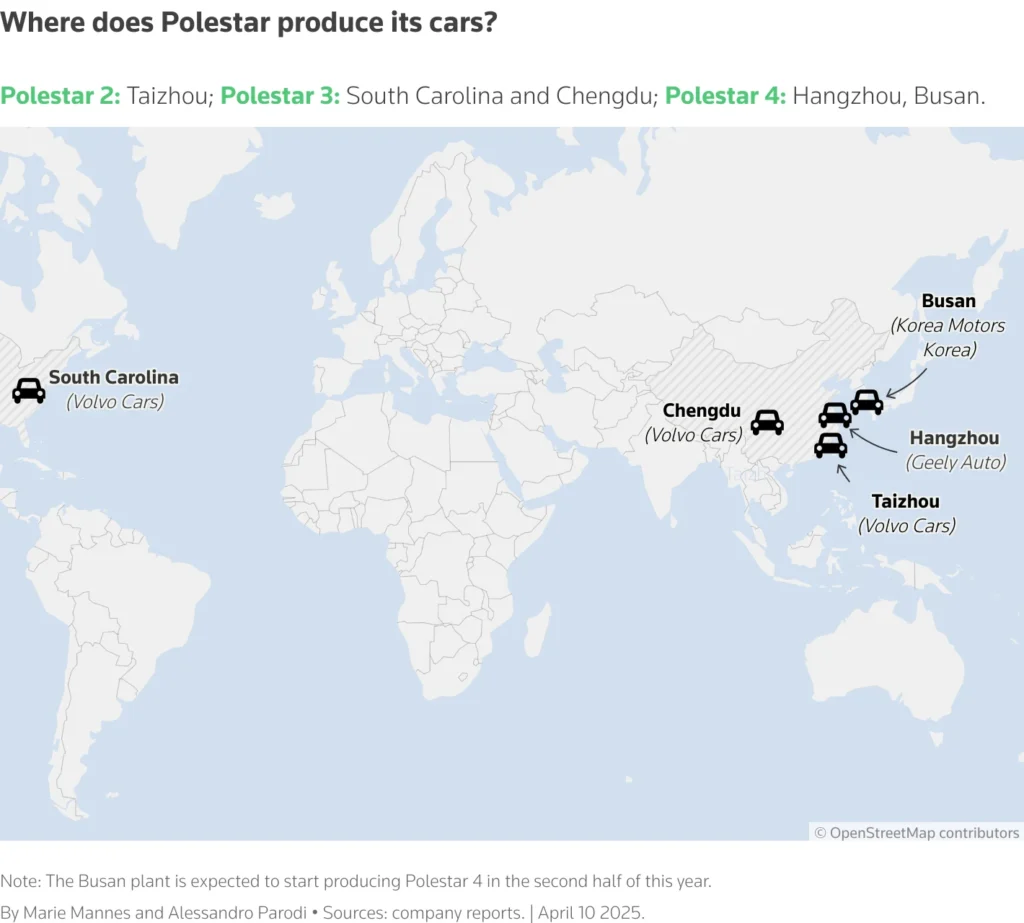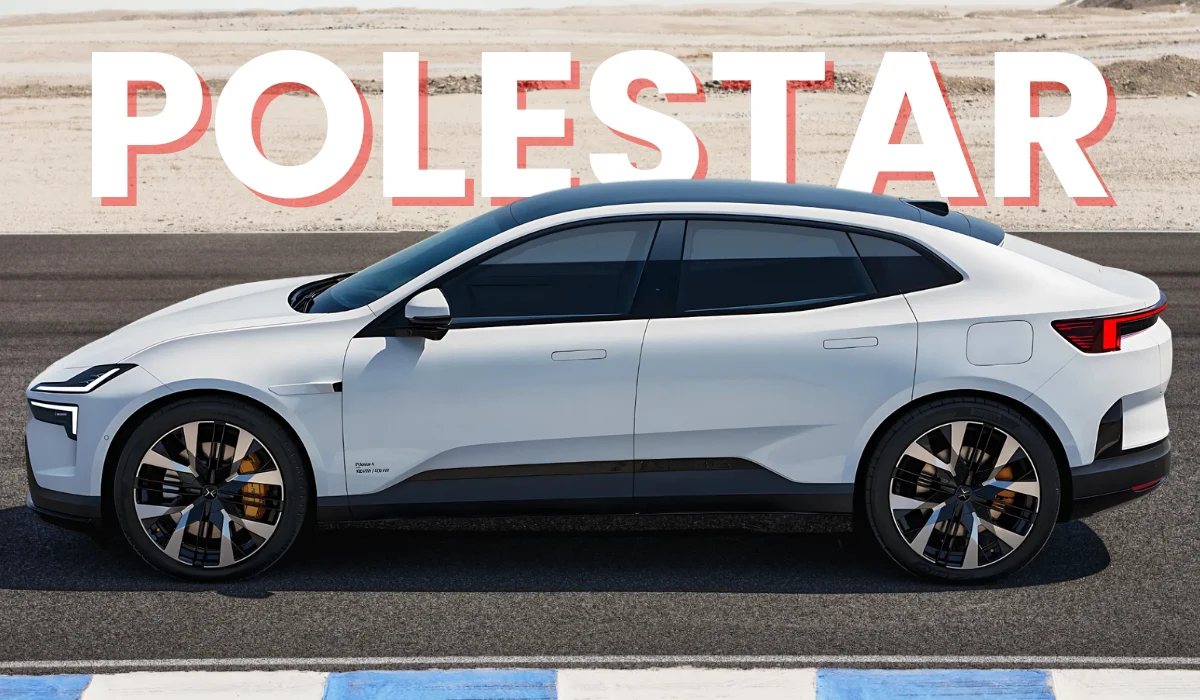Polestar, the Scandinavian darling of electric vehicles (EVs), is once again making headlines. The brand has strategically revised its expansion plans and is ready to make a permanent mark in the EV industry. From officially entering the French market to Polestar’s shifts in manufacturing and software development, it’s clear that they are not just another EV maker. Polestar is focused on building for the long term, demonstrating resilience, and prioritizing innovation.
Get ready as we dive into Polestar’s latest updates and see why the company is worth our attention.
Polestar’s Reentry into the France Market
The French launch is more than just an announcement. Polestar is finally ready to address one of Europe’s major EV markets after previously pausing expansion due to falling demand for EVs, tariff issues, and a logo dispute with Citroën.
Polestar is opening a showroom in Le Mans this July and will begin delivering the Polestar 2, Polestar 3, and Polestar 4 by October 2025. While online sales would be easier and quicker, Polestar is choosing a more grounded strategy of building service centers and a fully staffed team in France. This goes beyond car sales; it is aimed at building trust and establishing a genuine brand presence in the lives of French consumers.
A Polestar executive stated their ambition decisively—to make France a top-three market in Europe, alongside the UK and Sweden. Focused growth is more strategic than flashy, and this is a clear example.
Moving the Polestar 4 Production to South Korea
This year, one of Polestar’s most aggressive strategies includes relocating the production for the highly anticipated Polestar 4 from China to South Korea. Starting mid-2025, the sleek SUV coupe will be produced at Renault Korea’s Busan plant. The Polestar 4 is looking to change the game for EV fans as it comes with over 300 miles of range and 0-60 mph acceleration in under 3.8 seconds.

Of course, avoiding US-China tariffs is an advantage of the move, but there’s even more to it. South Korea’s Korea’s strong logistics infrastructure, access to shipping ports, and their mastery in high-voltage batteries provide the ideal ecosystem for South Korea to produce efficient and high-quality EVs. This strategy goes beyond immediate production concerns to developing a strong logistics and manufacturing supply chain for the rest of North America and the local South Korean market.
How Does This Impact Buyers?
In terms of pricing, there is not a significant impact, with single-motor models priced at $57,800 and dual-motor versions at $64,300. However, what gets better is Polestar’s supply chain reliability and increasing the Polestar brand’s quality control – reliability in delivery and speed.
Improving Polestar Software With an Indian HQ
As for every modern EV, software is just as important as the hardware itself. No one understands this better than Polestar. In order to move forward, they’ve been partnering with Infosys, which is based in Bengaluru, India. This partnership will allow them to create a smart vehicle software that will revolutionize the EV software industry.
This investment does not mean “shifting work to save on labor costs…” Instead, Infosys aims to enable features such as over-the-air updates, advanced in-car systems, and charging technologies. Why is that important? In the case of modern EVs, poorly designed apps or slow and unresponsive software updates can hurt brand image. Polestar’s in-house software development strategies guarantees they won’t fall behind, especially when progressing to future models Polestar 5, 6, and 7.
Polestar’s slow innovation in India drives home a crucial insight: agile software innovation turns customers into loyal customers and secures the long-term dominance of a brand.
Expanding Beyond Vehicles
EV ecosystem is an entire new segment being explored by Polestar, which includes:
- Polestar 7: a small SUV slated for 2027. Like Polestar 6, it will be built on SEA platform in Europe.
- Polestar Energy: Smart home charging services for 11 European countries enable customers to cut costs by participating in grid-level energy saving.
- Carbon Credits: Selling unused emissions credits Polestar holds in Europe not only helps them comply with regulations, but also serves as an additional revenue stream, strengthening the bottom line.
Polestar still has not fully achieved their goal of being a comprehensive vehicle manufacturer, as showcased by these initiatives. They are expected to combine cheaper energy solutions and emission reduction technologies that provide consumers value beyond the price tag and help the environment.
What the Future Looks Like For Polestar
The EV industry is now truly up for grabs. It appears that Polestar is making an effort to have a coherent strategy to dominate the market. Here are some recent updates:
- Focused Expansion: The measured entry into France shows that Polestar is willing to put in the effort to build a positive reputation. It also supports sustainability which is a core tenet of the company. Polestar’s focus on sustainability is seen with the move to South Korea for their more efficient production as well as their ability to better handle geopolitical shifts.
- Tech Leadership: Expanding on tech leadership implications for EVs, investment made by Polestar in its new Indian office demonstrates an understanding of where critical leadership battles will take place. Shifting into the energy sector, moving on CO₂ credits, and manufacturing future-ready EVs showcases Polestar’s objective to integrate its ecosystem and solidify its standing in the EV market.
Polestar is not focused on publicity; they are methodically and creatively shaping the future of transportation.
Drive the Future With Polestar
Polestar continues to make strides in the EV industry, showing that they want to build a lasting legacy. The company is already investing in customer service solutions in France and making use of innovation hubs in India. With these moves, Polestar seems to be more focused on the long-term goals of reputation, trust, product quality, and environmental responsibility.
FAQs
What happened with Polestar in France recently?
On June 11, 2025, Polestar launched operations in France with a showroom in Le Mans and expected delivery beginning on the Polestar 2, 3, and 4 models in October.
Why did Polestar move the production of the Polestar 4 to South Korea?
To avoid U.S. tariffs on cars produced in China as well take advantage of Busan, South Korea’s logistics and battery technology to improve assembly quality and speed.
What is the India tech hub?
Polestar established a software center with Infosys in Bengaluru to develop an in-car OS, over-the-air updates, and smart charging systems.
What is Polestar 7?
A compact European SUV to launch in or around 2027 on Polestar’s new SEA platform as part of their expanded product portfolio.
What is Polestar Energy?
A smart home charging service available in 11 EU countries that allows owners to charge at a time that not only saves them money on electricity but takes advantage of the grid.
How does CO₂ credits help Polestar?
Polestar has the opportunity to sell unused emissions credits in Europe, to competitors, generating additional profit and margin.
Why is software important to EV’s?
Because EV’s are software heavy for updating their technology, in-car experience, and charging features; and poor technology will negatively affect the brand.
Image Source: Reuters

